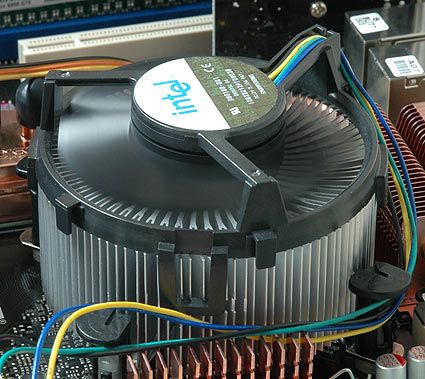What if Your CPU Cooler Fails?
Keep Cool: Processor Performance At Thermal Situations
This article first appeared in Tom's Hard News Email Newsletter
Processors have had a long history often checkered with heat emergencies. When CPUs first broke the Gigahertz line, huge heat sinks and powerful fans were necessary to cope with the heat that these chips dissipated. Some products, such as the Intel Pentium 3, would crash when they overheated; an Athlon 1200 could even physically burn out if the cooler was removed. Things were better with the Pentium 4, because this processor was capable of reducing clock speed in order to decrease heat dissipation in the event that the cooler failed or fell off. However, heat emergencies still exist today, even though energy efficiency has increased a lot, and processors come with various protective mechanisms. Compare Prices on CPU Coolers With the performance per watt debate that's going on, people tend to believe that modern processor products have overcome these issues, but they have not.
It's not only AMD that has had difficult times: almost exactly three years ago, Intel went through its own "valley of darkness" with its Pentium 4 processor family. These processors had just about reached clock speeds of 4 GHz, but at the cost of ridiculously high heat dissipation. They could not beat the AMD Athlon 64 processor family regardless of their record-breaking clock speeds, either. In November 2004 we found that the 3.6 GHz Pentium 4 560 ran so close to its thermal limits that processors automatically throttled their clock speed to decrease the thermal strain.
What is the situation today, though? Will processors still physically die if the cooler falls off? What if just the fan stops working? According to the energy efficiency claims from AMD and Intel, heat cannot be all that critical anymore. Or can it?
On the one hand, all processors you can buy today include one or more thermal diodes to measure chip temperature, so they initiate countermeasures when they overheat. These countermeasures can be processor features to reduce heat dissipation, or they may be initiated by the platform itself in order to fit into a more complex energy and power management scheme.
We took low-cost and high-end processors from both AMD and Intel and put them to the test with regular cooling, as well as in a simulation of a broken CPU fan. In so doing, we discovered that there still are considerable differences between AMD and Intel.
Related articles:
Get Tom's Hardware's best news and in-depth reviews, straight to your inbox.
Related videos (DivX format, downloadable zip files):
Current page: Keep Cool: Processor Performance At Thermal Situations
Next Page Processor Specifications
Patrick Schmid was the editor-in-chief for Tom's Hardware from 2005 to 2006. He wrote numerous articles on a wide range of hardware topics, including storage, CPUs, and system builds.
